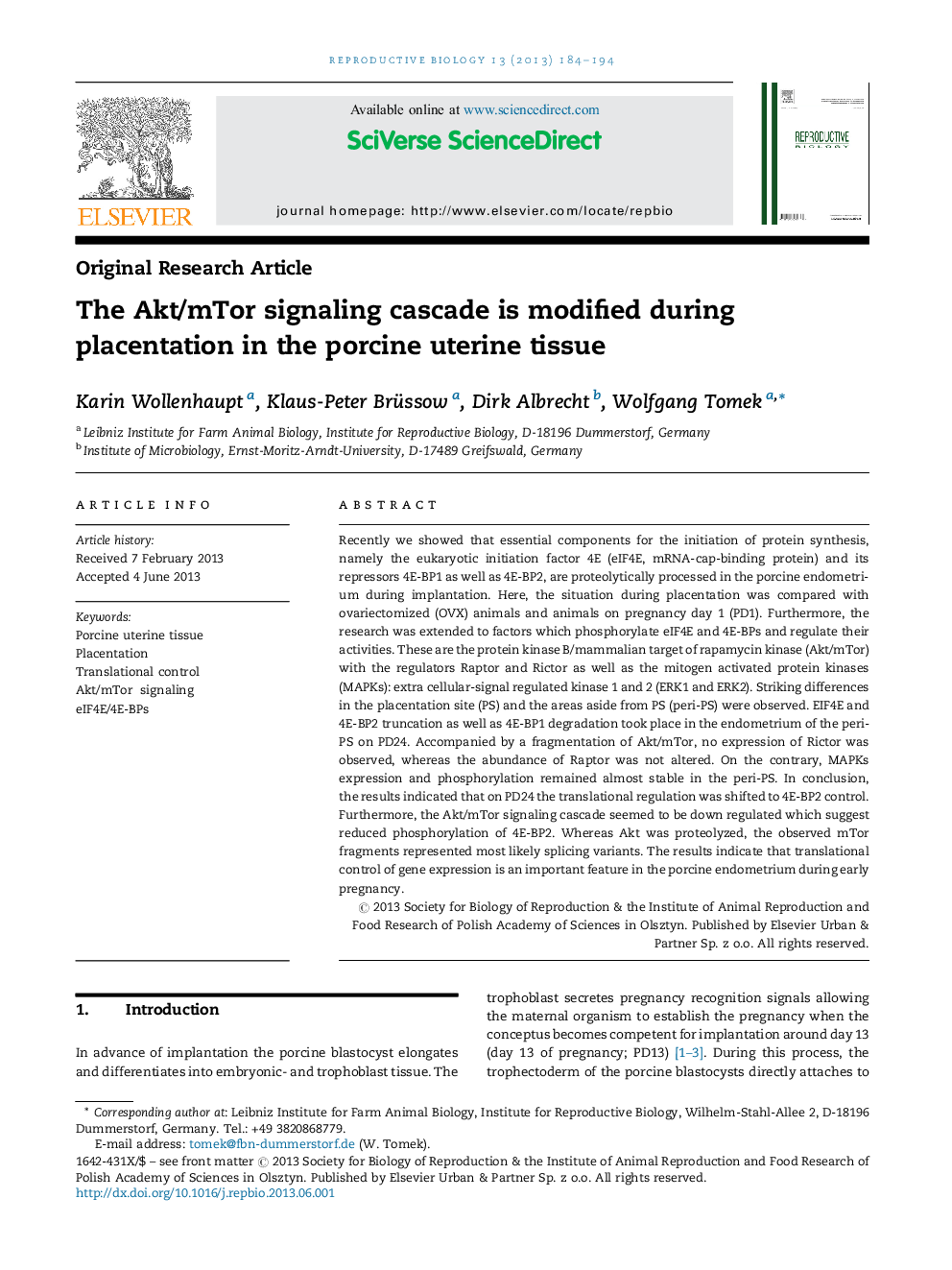| Article ID | Journal | Published Year | Pages | File Type |
|---|---|---|---|---|
| 2062506 | Reproductive Biology | 2013 | 11 Pages |
Recently we showed that essential components for the initiation of protein synthesis, namely the eukaryotic initiation factor 4E (eIF4E, mRNA-cap-binding protein) and its repressors 4E-BP1 as well as 4E-BP2, are proteolytically processed in the porcine endometrium during implantation. Here, the situation during placentation was compared with ovariectomized (OVX) animals and animals on pregnancy day 1 (PD1). Furthermore, the research was extended to factors which phosphorylate eIF4E and 4E-BPs and regulate their activities. These are the protein kinase B/mammalian target of rapamycin kinase (Akt/mTor) with the regulators Raptor and Rictor as well as the mitogen activated protein kinases (MAPKs): extra cellular-signal regulated kinase 1 and 2 (ERK1 and ERK2). Striking differences in the placentation site (PS) and the areas aside from PS (peri-PS) were observed. EIF4E and 4E-BP2 truncation as well as 4E-BP1 degradation took place in the endometrium of the peri-PS on PD24. Accompanied by a fragmentation of Akt/mTor, no expression of Rictor was observed, whereas the abundance of Raptor was not altered. On the contrary, MAPKs expression and phosphorylation remained almost stable in the peri-PS. In conclusion, the results indicated that on PD24 the translational regulation was shifted to 4E-BP2 control. Furthermore, the Akt/mTor signaling cascade seemed to be down regulated which suggest reduced phosphorylation of 4E-BP2. Whereas Akt was proteolyzed, the observed mTor fragments represented most likely splicing variants. The results indicate that translational control of gene expression is an important feature in the porcine endometrium during early pregnancy.
